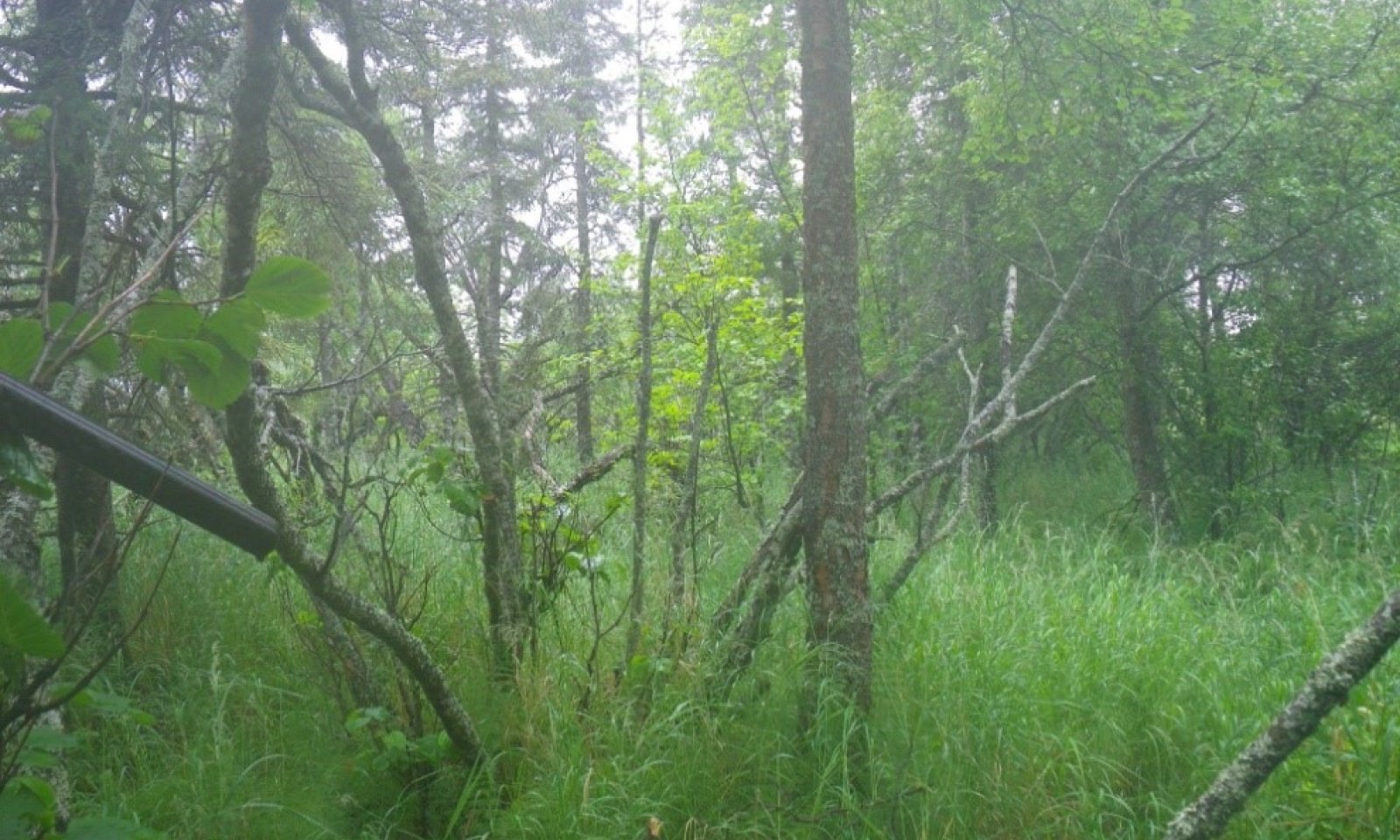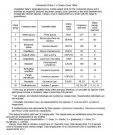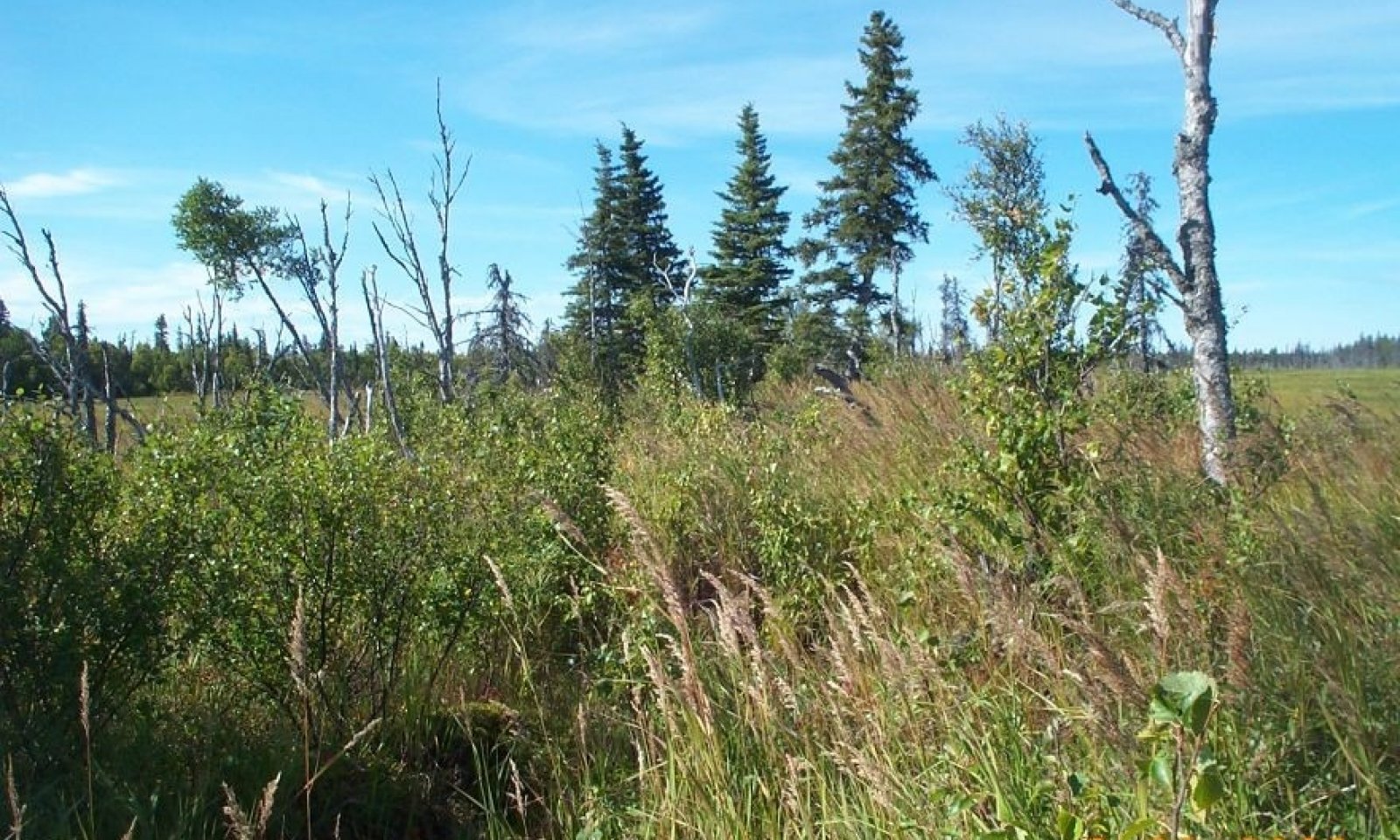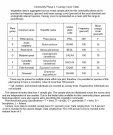
Boreal Forest Loamy Wet Flood Plains
Scenario model
Current ecosystem state
Select a state
Management practices/drivers
Select a transition or restoration pathway
-
Transition T1A
Beaver activity.
More details -
Restoration pathway R2A
Removal of beavers.
More details -
No transition or restoration pathway between the selected states has been described
Target ecosystem state
Select a state
State 1
Reference State



Description
The reference state supports one community phase, which is distinguished by the developed structure and dominance of the vegetation and by its ecological function and stability. The reference community phase is a closed mixed forest (Viereck et al., 1992).
This report provides baseline inventory data for the vegetation. Future data collection is needed to provide further information about existing plant communities and the disturbance regimes that result in transitions from one community to another. Common and scientific names are from the USDA PLANTS database. Community phases are characterized by the Alaska Vegetation Classification System (Viereck et al., 1992).
Submodel
State 2
Beaver-Affected State



Description
This alternate state results from ponding of areas upstream from beaver dams. Beavers (Castor canadensis) directly kill trees and large shrubs for food and construction of dams, and they indirectly kill trees and other species by raising the water table (USDA–FS, 2013). Ponding generally results in a vegetative community different from the one normally on these flood plains. This plant community commonly includes resilient individuals extant in the reference community phase and pioneer hydrophilic species. The permanent ponding associated with areas upstream of beaver dams commonly negates the influence of flooding on the soils and vegetation. This vegetative community is likely to remain relatively stable until the dam is removed.
Browsing by moose may occur in this alternate state, but it does not appear to affect the ecological processes significantly enough to alter the community.
Submodel
Mechanism
A transition to an alternate state occurs when a water source is dammed by beavers. Areas surrounding beaver ponds may support plant assemblages distinctly different from those typically on these high flood plains. The vegetative community generally is comprised of species that are water tolerant and can reproduce in wet soils. These areas may be susceptible to flooding or ponding after periods of rainfall and snowmelt. This prevents nonhydrophilic species from establishing and keeps the composition of the plant community relatively stable. The period needed for this transition depends on the presence and activity of beavers.
Mechanism
Restoration of this site begins with the removal of the beaver dam. Further development such as plantings may be needed. It is unknown whether the natural removal of a beaver dam will lead to a return of the area to the reference state. Further research and in situ documentation is needed to fully describe this transition.
Model keys
Briefcase
Add ecological sites and Major Land Resource Areas to your briefcase by clicking on the briefcase (![]() ) icon wherever it occurs. Drag and drop items to reorder. Cookies are used to store briefcase items between browsing sessions. Because of this, the number of items that can be added to your briefcase is limited, and briefcase items added on one device and browser cannot be accessed from another device or browser. Users who do not wish to place cookies on their devices should not use the briefcase tool. Briefcase cookies serve no other purpose than described here and are deleted whenever browsing history is cleared.
) icon wherever it occurs. Drag and drop items to reorder. Cookies are used to store briefcase items between browsing sessions. Because of this, the number of items that can be added to your briefcase is limited, and briefcase items added on one device and browser cannot be accessed from another device or browser. Users who do not wish to place cookies on their devices should not use the briefcase tool. Briefcase cookies serve no other purpose than described here and are deleted whenever browsing history is cleared.
Ecological sites
Major Land Resource Areas
The Ecosystem Dynamics Interpretive Tool is an information system framework developed by the USDA-ARS Jornada Experimental Range, USDA Natural Resources Conservation Service, and New Mexico State University.

